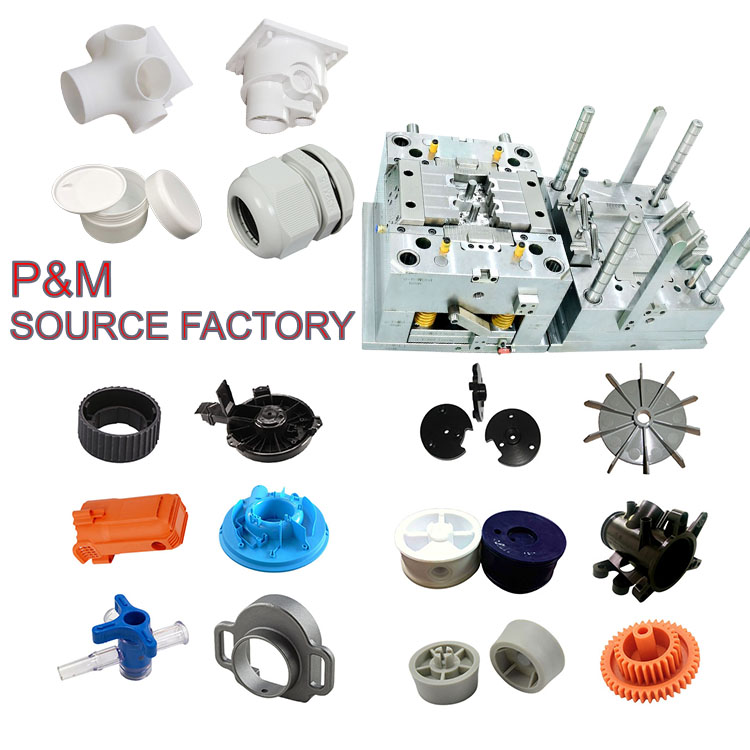-
How EU-Compliant Custom Molds Meet 2025 Automotive Lightweight Standards
EU-compliant custom molds play a pivotal role in meeting 2025 automotive lightweight standards. These molds enable precise shaping of advanced materials, reducing vehicle weight without compromising durability. By optimizing material usage, they help manufacturers lower emissions and align...Read more -
How EU-Compliant Custom Plastic Parts Meet 2025 Automotive Sustainability Standards
You play a vital role in advancing automotive sustainability by choosing EU-compliant materials. Custom Parts Out of Plastic align with 2025 standards by ensuring recyclability, lightweight designs, and reduced emissions. These parts help you comply with strict regulations, lower production costs...Read more -
How to turn plastic product design into reality: mold manufacturing and injection molding process
The market requires innovation, and innovation requires design. How can design be achieved? Professional mold manufacturers will solve your problems. The design and production of products sometimes face many problems. For example, the feeding port of injection molding can affect the appearance. ...Read more -

Take a simple way to understand the injection molding process.
What is Injection Molding: The injection molding process is a process of making semi-finished parts of a certain shape from molten raw materials through operations such as pressurization, injection, cooling, mold opening, and mold release. Its raw materials are ABS\PE polyethylene, PP polypropyl...Read more -
How to do if there are shrinkage marks on the surface of injection molded products
1. Uneven wall thickness of the product causes uneven surface shrinkage, resulting in shrinkage marks. 2. Causes and solutions 1. Improper control of molding conditions. Appropriately increase the injection pressure and injection speed, increase the compression density of the solution, extend th...Read more -
Performance difference between PETG and PMMA
PETG and PMMA are both highly transparent materials, and relatively, the market is more familiar with PMMA. However, PETG’s real entry into the market began with transparent plastic packaging for high-end cosmetics. Before PETG was launched, PMMA was almost all used for transparent plastic...Read more -
Mold material selection
Mold material selection is a very important link in the whole mold making process. Mold material selection needs to meet three principles, namely: the mold meets the requirements of working conditions such as wear resistance, strength and toughness; the mold meets the process performance require...Read more -
Difference between 3D printing and CNC
There are three differences between CNC machining and 3D printing: Handboard processing mainly includes CNC machining, 3D printing, copying, rapid tooling, etc. Today, Noble will tell you the difference between CNC machining and 3D printing. First of all, you should know that 3D printing is a ki...Read more -
Plastic shrinkage is the problem of plastic shrinkage
1. There are four kinds of plastic shrinkage: thermal shrinkage, phase change shrinkage, orientation shrinkage, compression shrinkage and elastic recovery. The shrinkage process consists of three parts: shrinkage before solidification of gate, cooling shrinkage and shrinkage after demoulding. 2. ...Read more -
Description and application of product coating
There are different names depending on the type of paint used, for example, the primer coat is called the primer coat, and the finish coat is called the finish coat. Generally, the coating obtained by coating is relatively thin, about 20~50 microns, and the thick paste coating can obtain a coati...Read more -
Injection mould
1、 Definition of injection mold The mold used for plastic injection molding is called injection molding mold, or injection mold for short. The injection mold can shape plastic products with complex shape, precise size or inserts at one time. “Seven parts mold, three parts process”. ...Read more -
ABS material properties
1. General performance ABS engineering plastic appearance is opaque ivory grain, its products can be colorful, and has a high gloss. The relative density of ABS is about 1.05, and the water absorption rate is low. ABS has good binding with other materials, easy to surface printing, coating and co...Read more
- 86-186-57428056
- candy@nbplasticmetal.com
